MÃE D´ÁGUA
[S. Miguel – Açores]

EARTHCACHE
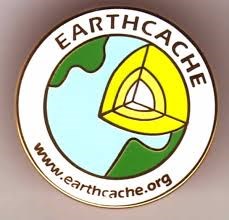
PORTUGUÊS

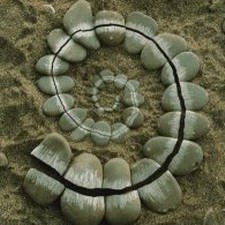
Esta earthcache tem por objetivo dar a conhecer os vários tipos de disjunções existentes, bem como alguns “tipos” de rochas, existentes no local.
A MÃE D´ÁGUA

“ Uma pequena parte da cidade da Ribeira Grande de agora, que fica para o sul da rua dos Condes da Ribeira Grande, ao fim dela e do seu lado esquerdo, para quem vai de baixo para cima, junto à ribeira Grande, desde há muito tempo que se chama de Mãe d’Água.
Atravessando essa ribeira, havia ali uma graciosa ponte de madeira, para pessoas e animais pela arreata,…essa ponte foi substituída por aquela de “pedra e cal” que agora ali está. E há ali um largo aprazível, assombreado por meia dúzia de plátanos. Não se sabe, ao certo, as origens dessa denominação de Mãe d’Água. Presume-se que isto se relaciona com o fato de haver ali por perto, no leito da ribeira e mais acima daquele histórico aqueduto que, certamente, foi construído para abastecer de água potável o Mosteiro de Jesus do Campo das Freiras e outras pessoas que para ali viviam, uma pequena “represa” que, contendo as águas, as desvia para uma das valas que alimenta uma fileira de moinhos por ali abaixo.
É esta uma parte interessante da nossa “grande ribeira”, com história e um local muito agradável e para onde, noutros tempos e durante o verão, as pessoas iam para gozarem o marulhar e o frescor provindos daquelas águas. E, para dar mais alegria a tudo isto, mais acima desse largo e na margem nascente da ribeira, havia um conjunto de “lavadouros” onde, todos os dias, se juntavam mulheres e raparigas casadoiras na lavagem das roupas das suas casas e das de outras, que as pagavam para isso”.
( Ezequiel Moreira da Silva)
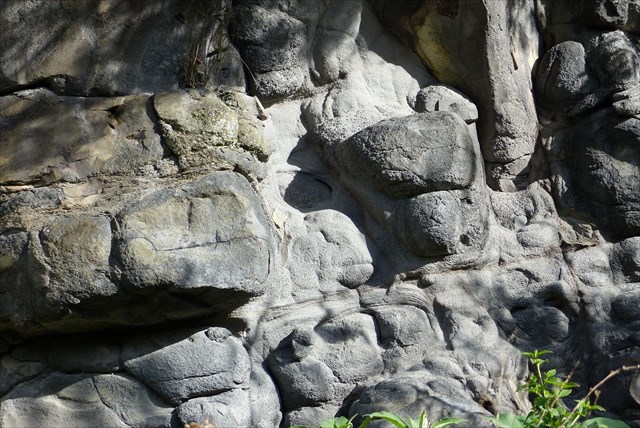
VÁRIOS TIPOS DE DISJUNÇÃO
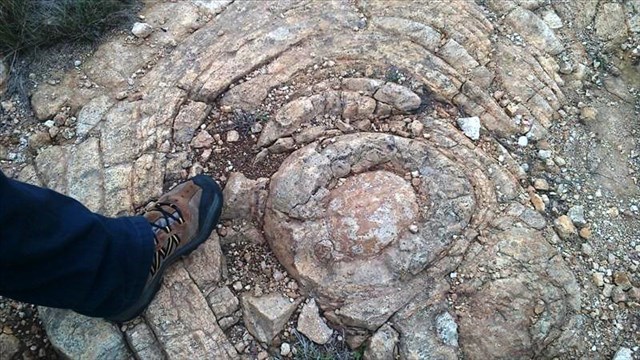

Existem dois tipos” de disjunção: a prismática e a esferoidal!
A lava depois de arrefecer à superfície e ao sofrer a ação dos agentes de geodinâmica externa, pode sofrer um tipo de erosão que origina uma espécie de esferas concêntricas com camadas que se apresentam cada vez menos alteradas para o interior e um núcleo bem conservado. A rocha original entre estas esferas apresenta-se por norma também muito alterada quimicamente e desagregada fisicamente, ou seja, apodrecida. Na ilha de São Miguel, existe em muitos locais, como por exemplo na Pedreira, no Concelho do Nordeste.
Existe uma outra forma de disjunção em lava designada por disjunção prismática, muitas vezes desenvolvida em rochas básicas, embora também surja em lavas ácidas. A disjunção prismática está muito mais bem documentada em lavas básicas, tipo basalto, do que em por exemplo granitos. Podem ver exemplares magníficos deste outro tipo de disjunção na ilha de Santa Maria e o caso mais famoso mundialmente é a Calçada de Gigantes ou Giant Causewayna Irlanda do Norte, mas este fenómeno também existe, um pouco por todas as ilhas dos Açores, sendo os mais conhecidos: a Rocha dos Bordões (a habitual e a submarina…) na ilha das Flores, a ribeira da Malbusca (na ilha de Santa Maria), na falésia dos Fenais da Ajuda e na Baía das Águalva (na ilha Terceira),…
Disjunção prismática
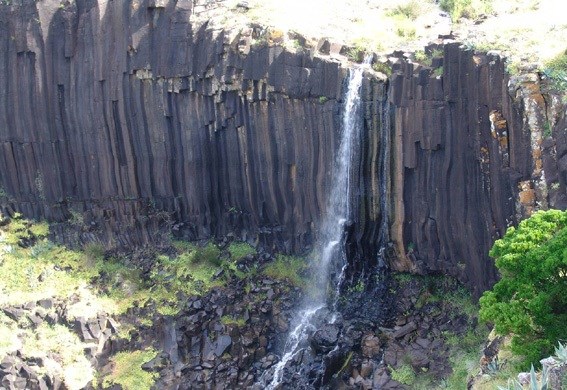
Disjunção prismática ou disjunção colunar é um processo geológico atetônico que dá-se quando ao arrefecer de alta temperatura o basalto sofre tensão por contração e fragmenta-se em colunas com forma de prisma, geralmente em sentido perpendicular a superfície. Por ocorrer geralmente na superfície o padrão geométrico tem aspeto peculiar de calçamento. Ocorre geralmente em materiais de origem ígnea, sills, diques de rochas básicas ou intermediárias.
Disjunção esferoidal
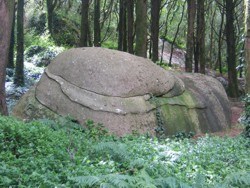
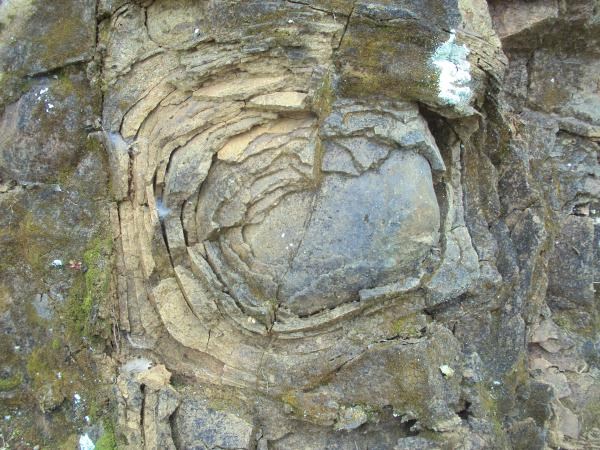
Divisão das rochas em corpos geométricos mais ou menos esferoidais em consequência de fenómenos de consolidação magmática, de meteorização, etc.
A disjunção esferoidal, também designada disjunção em bolas, é frequente nas rochas magmáticas básicas, como doleritos e gabros, mas encontra-se, também, em dioritos, granodioritos e granitos.
EXFOLIAÇÃO E DISJUNÇÃO ESFEROIDAL
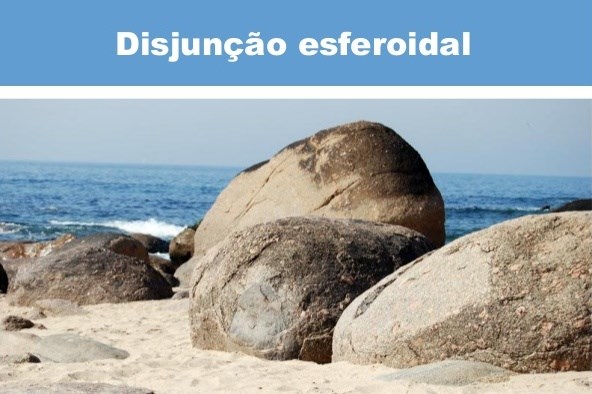
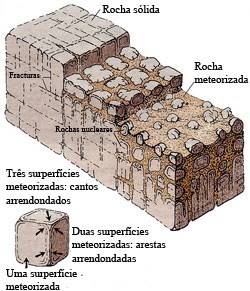
Duas formas de fragmentação rochosa não relacionadas diretamente a fraturas preexistentes são a exfoliação e a disjunção esferoidal. A exfoliação é um processo de meteorização física pelo qual placas grandes e achatadas ou curvas de rocha são fraturadas e destacadas de um afloramento. A disjunção esferoidal consiste, também, na fragmentação e separação de camadas curvas de um bloco geralmente esférico mas, usualmente, numa escala muito menor. O seu mecanismo permanece desconhecido mas pode resultar de fendas paralelas à superfície do afloramento causadas por alteração química ou da distribuição diferencial de meteorização química e mudanças de temperatura.
CLASSIFICAÇÃO DAS ROCHAS
As rochas são formadas por dois ou mais minerais agrupados. Existem três classificações para as rochas, de acordo com a sua formação: magmáticas, sedimentares e metamórficas.
Rochas Magmáticas
As rochas magmáticas, ou ígneas, como também são chamadas, são formadas pelo magma solidificado expelido por vulcões, e ainda podem ser subdivididas em dois tipos: intrusivas e extrusivas;
Rochas magmáticas intrusivas
São as rochas formadas pelo magma que se solidificou em grandes profundidades. O granito é uma das variedades desse tipo de rocha. No Brasil, algumas serras são formadas de granito, como a da Mantiqueira, do Mar, e algumas serras do Planalto Residual Norte-Amazônico.
Rochas magmáticas extrusivas
São as rochas que são formadas pelo magma solidificado na superfície. Um exemplo de rocha extrusiva é o basalto.
Rochas Sedimentares
São formadas através da sedimentação de partículas de outras rochas existentes ou de materiais orgânicos. As rochas sedimentares podem ser divididas em três tipos: clásticas, orgânicas e químicas.
Clásticas
Também chamada de rochas sedimentares detríticas, são formadas por detritos de outras rochas antigas. Como exemplo de rocha clástica, existe o Arenito, Tilito, etc.
Orgânicas
As rochas sedimentares orgânicas são formadas por restos de animais e vegetais mortos, que vão se acumulando em alguns locais, e através de grande pressão e temperatura, dão origem á rochas e minerais como calcário, carvão mineral, petróleo, etc.
Químicas
São formadas quando o líquido (água) onde os sedimentos de rocha estão dispersos, se torna saturado. As rochas químicas em geral formam cristais. Ex: calcita, aragonita, dolomita, estalactites e estalagmites.
Rochas Metamórficas
As rochas metamórficas são rochas que sofreram alterações na sua estrutura em decorrência de altas pressões e temperaturas. Exemplos de rochas metamórficas são o mármore, quartzito (de onde é extraído o quartzo), etc.
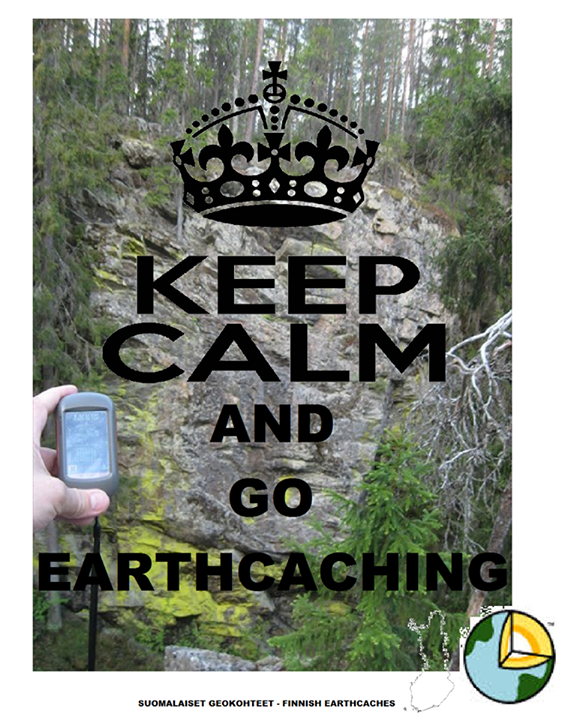
PARA REALIZAR E REGISTAR ESTA EARTHCACHE:
PERGUNTAS:
Para “encontrar/registar” esta cache deverá: provar que esteve no local e responder às seguintes questões, enviando um email/mensagem de Geocaching, com as respostas, em português ou em inglês, para o nosso perfil.
Só depois, de enviar as respostas, e conforme as “guidelines” para as Earthcaches, deverá efetuar o seu registo!
Serão removidos todos os registos que não obedeçam a estes requisitos.
1. A partir da descrição desta earthcache, responde às questões:
a) Define disjunção esferoidal. Qual o outro nome porque também é conhecida esta disjunção?
b) A que fenómenos se deve a disjunção esferoidal?
c) Identifica um local na ilha de São Miguel onde existe disjunção prismática.
d) Identifica outro local, na ilha de S. Miguel, onde existe disjunção esferoidal.
2. Na zona do GZ, existe um paredão.
Observando a zona do GZ responde às seguintes questões:
a) Que tipo de rocha existe neste paredão?
b) Identifica o tipo de disjunção existente no GZ.
c) Estima a altura do paredão onde se situa esta disjunção.
d) O que existe de especial, em frente a este paredão?
3. Na zona do way point 1, existe um moinho de água e suas mós.
As mós deste moinho são constituídas por que tipo de pedra?
Nota: poderá observar várias mós no Ponto de observação: WP3.
4. No way point 2 existe um muro, no qual estão inclusas duas esculturas.
A “interessante” escultura inferior (em baixo), é feita de que material?
5.
TAREFA OBRIGATÓRIA:Deverá tirar uma foto sua, onde você apareça (ou com um papel/placa onde conste o seu nickname e a data da visita) e que comprove a sua presença no GZ desta EC - NÃO METASPOILERS. Esta foto deverá ser colocada no seu registo ou enviada por email ou sistema de mensagens de Geocaching, para o owner!
Não responderemos ao seu contato, a não ser que haja algum “problema” com as suas respostas ou registo.



AGRADECIMENTOS:
Agradecemos a especial colaboração do amigo
Professor Doutor Victor-Hugo Forjaz - Vulcanólogo de Engenharia, Jubilado
e do Observatório Vulcanológico e Geotérmico dos Açores (OGVA).

“AS ROCHAS DA MÃE D´ÁGUA”
THE MOTHER OF WATHER ROCKS
[S. Miguel - Azores]
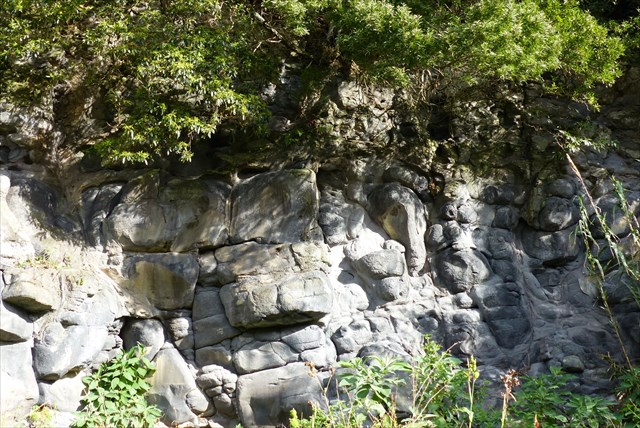
ENGLISH

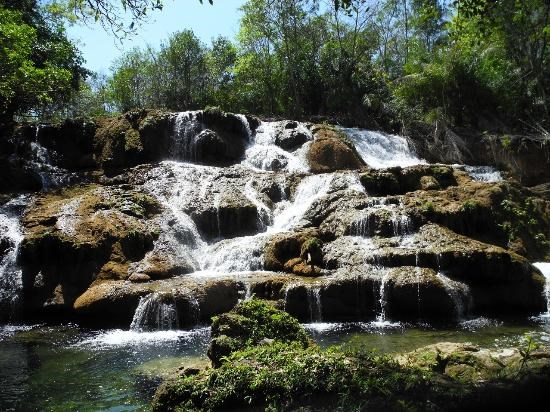
This EarthCache aims to raise awareness of the various types of disjunctions as well as some "types" of rocks, existing onsite..
“Mãe d´Água“
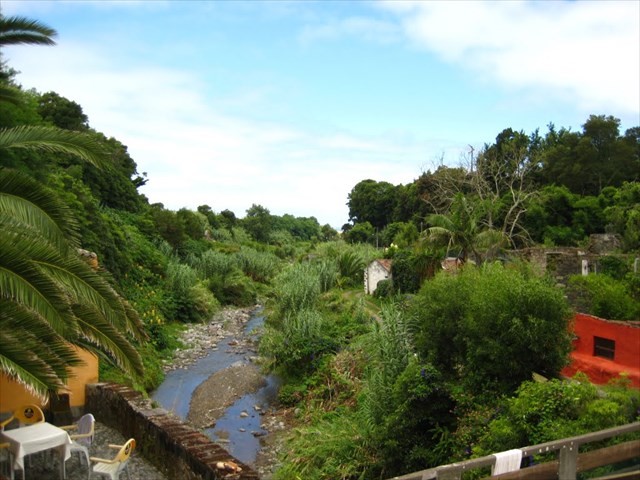
"The small town of Ribeira Grande, which now is to the South of the Counts Street of Ribeira Grande, at the end of it and to the left, resides, for a long time , what is called Mãe D'água (Water Mother).
Crossing the river, there was a graceful wooden bridge, for people and animals by the reins, ... this bridge was replaced by that of "bricks and mortar" that now there is. And is there a pleasant wide shadow from half a dozen plantains. No one knows for sure the origins of Mother Water's denomination. It is assumed that this relates to the fact that around there, in the bed of the river and above that historic aqueduct that certainly was built to supply drinking water the Monastery of Jesus Field of Nuns and others to lived there, a small "dam" that containing the water, turns it into one of the ditches feeding a row of windmills down there.
This is an interesting part of our "great river", with a history and a very nice place and where in other times and during the summer, people went in order to enjoy the noises and the freshness stemmed from those waters. And to give more joy to all this, above that broad and rising bank of the river, there was a set of "wash houses" where, every day, women and marriageable girls joined in washing clothes from their homes and of others. "
( Ezequiel Moreira da Silva

VARIOUS TYPES OF DISJUNCTION
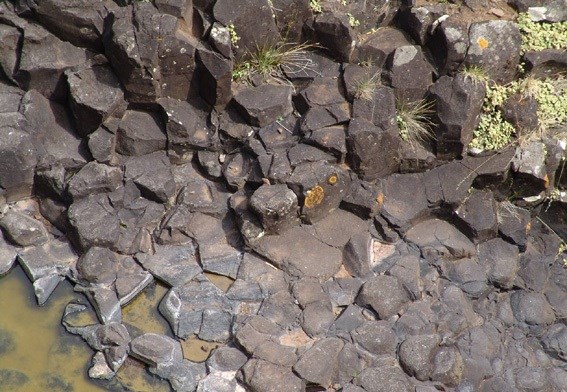
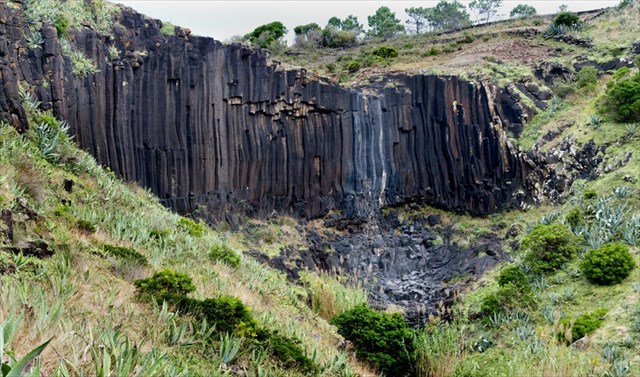
There are two types "of disjunction: the prismatic and the spheroidal!
Spheroidal weathering is a form of chemical weathering that affects jointed bedrock and results in the formation of concentric or spherical layers of highly decayed rock within weathered bedrock that is known as saprolite. When saprolite is exposed by physical erosion, these concentric layers peel (spall) off as concentric shells much like the layers of a peeled onion. Within saprolite, spheroidal weathering often creates rounded boulders, known as corestones or woolsack, of relatively unweathered rock. Spheroidal weathering is also called onion skin weathering, concentric weathering, spherical weathering, or woolsack weathering.
There is another way of disjunction wash designated prismatic disjunction often developed at acidic rocks, although it also appears in basic lava.
You can see magnificent examples of this other kind of disjunction on the island of Santa Maria and the most famous case is the world Causeway Giants Causeway Giant or in Northern Ireland, but this phenomenon also exists, a bit throughout the islands of the Azores, and the Popular: the Rock Fillers (the usual and underwater ...) on the island of Flores, the stream of “Malbusca” (on the island of Santa Maria), on Fenais da Ajuda and onTerceira Island, at “Baía da Agualva”,…
Columnar jointing
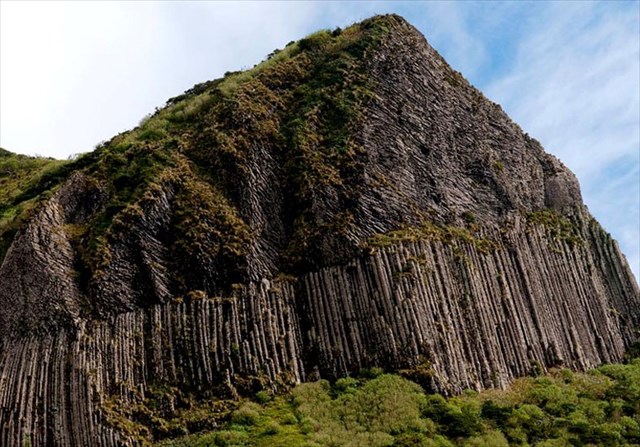
During the cooling of a thick lava flow, contractional joints or fractures form. If a flow cools relatively rapidly, significant contraction forces build up. While a flow can shrink in the vertical dimension without fracturing, it can't easily accommodate shrinking in the horizontal direction unless cracks form; the extensive fracture network that develops results in the formation of columns. The topology of the lateral shapes of these columns can broadly be classed as a random cellular network. These structures are predominantly hexagonal in cross-section, but polygons with three to twelve or more sides can be observed. The size of the columns depends loosely on the rate of cooling; very rapid cooling may result in very small (<1 cm diameter) columns, while slow cooling is more likely to produce large columns.
Spheroidal weathering
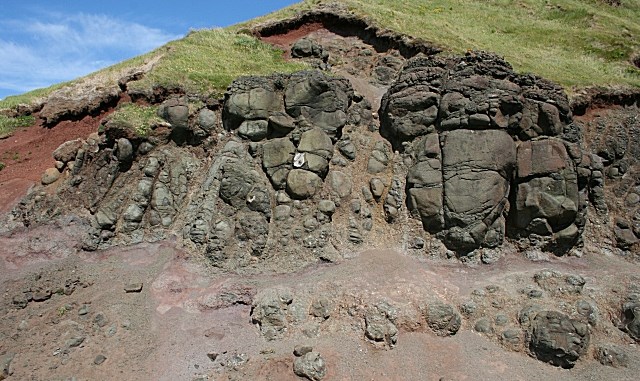
Division of rocks more or less spheroidal geometrical bodies as a result of igneous phenomena consolidation of weathering, etc.
The spheroidal weathering, also called disjunction in balls, is common in basic magmatic rocks such as dolerite and gabbro, but is also in diorite, granodiorite and granite.
EXFOLIATION AND SPHEROIDAL WEATHERING
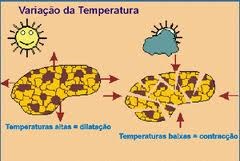
Two forms of rock fragmentation not directly related to pre-existing fractures are the exfoliation and the spheroidal weathering.
Exfoliation is the process by which physical weathering and large flat plates or curved rock is fractured and detached from an outcrop. The spheroidal weathering is also the fragmentation and separation of layers curves of a generally spherical block but usually on a much smaller scale. Its mechanism remains unknown but may result in cracks parallel to the surface of the outcrop or chemical change caused by the chemical weathering differential distribution and temperature changes.
CLASSIFICATION OF ROCKS
The rocks are formed by two or more groups minerals. There are three classifications for the rocks, according to their formation: magmatic, sedimentary and metamorphic.
Magmatic rocks
Magmatic rocks/igneous, are formed by the solidified magma expelled by volcanoes, and can be further divided into two types: intrusive and extrusive;
Magmatic intrusive rocks
These are the rocks formed by magma that solidified at great depths. Granite is one of the varieties of this type of rock. In Brazil, some mountains are formed of granite, as the Mantiqueira, Marine, and some mountains of Northern Plateau Residual Amazon.
Magmatic extrusive rocks
These are the rocks formed by magma solidifying on the surface. An example of extrusive rock is basalt.
Sedimentary rocks
Sedimentary rocks are formed by sedimentation of particles existing in rocks or other organic materials. Sedimentary rocks can be divided into three types: clastic, organic and chemical.
Clastic
Also called detrital sedimentary rocks are formed by debris from other ancient rocks. As an example of clastic rock, there is Sandstone, Tillite, etc.
Organic
The organic sedimentary rocks are formed from the remains of animals and dead plants, that accumulate in some places, and through great pressure and temperature, give rise to the rocks and minerals such as limestone, coal, oil, etc.
Chemical
They are formed when the liquid (water) where the pellets in the rock are dispersed and it becomes saturated. Chemical rocks generally form crystals. Eg calcite, aragonite, dolomite, stalactites and stalagmites.
Metamorphic rocks
Metamorphic rocks are rocks that have changed in structure due to high pressures and temperatures. Examples are metamorphic marble, quartzite (where quartz is extracted), etc.

TO PERFORM AND LOG THIS EarthCache:
QUESTIONS:
To "find / register" this cache you must: prove you that visited the site and answer the following questions by sending an email
(within seven days of registration, only for the constant email our profile and your text in Portuguese or in English),
with the answers to our profile:
1. From the description of this EarthCache, answer the questions:
a) What is spheroidal weathering? This disjunctionhas another name, mention it.
b) To what phenomena is spheroidal weatheringto?
c) Identify a location on the island of São Miguel where there is columnar jointing.
e) Identify another location on the island of São Miguel, where there is spheroidal weathering..
2. In the area of GZ, there is a wall.
Observing the area of GZ answer the following questions:
a) What kind of rock is there in this wall?
b) Identifie the type of existing disjunction in GZ.
c) Estimate the height of the wall where this disjunction is .
d)Is there anything special in front of this wall? What is it?
3. On the way point 1 zone, there is a water mill and its millstones.
The grinding wheels of this mill consists of what kind of stone?
NOTE: You may see several millstones at the observation point: WP3.
4. On the way point 2 there is a wall, in which there are included two sculptures.
What materialis the "interesting" lower sculpture (below) is made of ?
5. TASK (not optional): You must take a picture of yourself, where do you show up, (or with a paper / plaque with your geocaching nickname and the date of the visit) and that proves your presence in the GZ of this EC - no spoilers please. This photo must be placed in your log or sent by email or Geocaching messaging system, to the owner!




THANKS:
We appreciate the special collaboration of the geocacher friend
Professor Victor-Hugo Forjaz - volcanologist Engineering, Emeritus
and the Volcanological and Geothermal Observatory of the Azores (OGVA).
